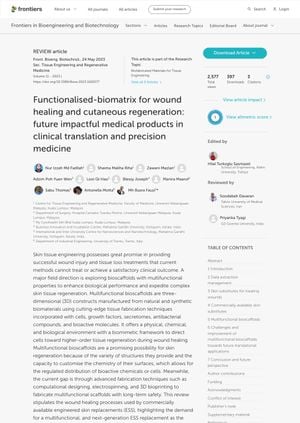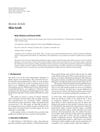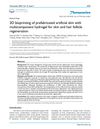Functionalized Biomatrix for Wound Healing and Cutaneous Regeneration: Future Impactful Medical Products in Clinical Translation and Precision Medicine
May 2023
in “
Frontiers in Bioengineering and Biotechnology
”
functionalised-biomatrix wound healing cutaneous regeneration diabetic ulcers burns split skin graft engineered skin substitutes infection multifunctional bioscaffolds 3D structures biomaterials bioactive agents stem cell behavior cell growth fibronectin collagen-type-I-based scaffolds tissue engineering immune cell scaffold interactions biomatrix skin regeneration skin graft bioscaffolds 3D biomaterials collagen scaffolds

TLDR The document concludes that more research is needed on making and understanding biomaterial scaffolds for wound healing.
The document discusses the potential of functionalised-biomatrix for wound healing and skin regeneration, particularly for deep skin wounds like diabetic ulcers and burns. Traditional methods such as the split skin graft have limitations, and engineered skin substitutes carry the risk of infection. The paper highlights the potential of multifunctional bioscaffolds, 3D structures made from biomaterials, which can deliver bioactive agents, control stem cell behavior, and direct cell growth. However, their fabrication for clinical use requires controllable and proper mechanical properties. The document also notes that wound healing requirements differ for each clinical application, making multifunctionality a prerequisite. Despite promising results in models, few of these approaches have been applied to human clinical trials due to various challenges. The document also discusses the role of fibronectin, a protein involved in wound healing, and the potential of collagen-type-I-based scaffolds for tissue engineering applications. The document concludes that further investigation is needed, particularly into advanced fabrication techniques and understanding immune cell scaffold interactions.





